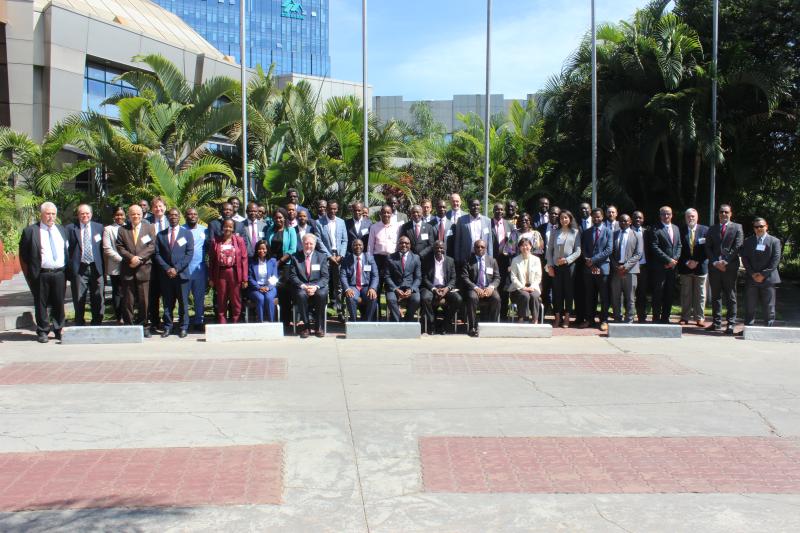
Participants from 17 African countries and the International Atomic Energy Agency (IAEA) joined the U.S. Nuclear Regulatory Commission (USNRC) at the Second USNRC Africa Regional Capacity Building Meeting to discuss their progress in building regulatory oversight programs and their current challenges and priorities. Held in Lusaka, Zambia, from January 29-31, 2024, the USNRC received feedback from partners, engaged new countries, and began planning collaborative activities for the next 18-24 months.
The meeting was hosted by the Zambia Radiation Protection Authority (RPA) and included 47 participants from the regulatory authorities in Benin, Burundi, Cameroon, Central Africa Republic, Chad, Congo-Brazzaville, Cote d’Ivoire, Ethiopia, Ghana, Kenya, Malawi, Mauritius, Mauritania, Mozambique, Senegal, Zimbabwe and the host country of Zambia. The IAEA and the U.S. Department of Energy (USDOE), which also provide capacity-building support in Africa, joined the USNRC and its contractor, AdSTM, to hear directly from the regulators. The meeting provided a comprehensive overview of the NRC’s capacity-building activities and accomplishments. The IAEA discussed its ongoing and planned support for regulatory development in Africa. Participating countries presented the status of their regulatory programs, discussed recent accomplishments, including tasks completed in partnership with the USNRC, and current regulatory challenges. In addition, Zambia presented on two important projects that are being carried out with USNRC support. The University of Zambia provided an overview of its postgraduate program in radiation protection, launched in 2023. And the Zambian RPA discussed the impact of their public awareness strategy to engage users of radiation sources and educate them on their responsibly to meet regulatory requirements. AdSTM also presented an overview of the new xARIS software program for developing and maintaining radiation source inventories.
Addressing common challenges in Africa, AdSTM delivered an overview of the licensing and inspection workshops offered on Radiation Therapy, Nuclear Medicine, Interventional Radiology and Industrial Radiography, all of which are high priorities for regulatory authorities in Africa. The USDOE also provided an overview of their support in the Africa region.
The USNRC conducted bilateral meetings with each participating country and identified country specific needs. These generally fall into the following categories:
- Completion of or conduct of new, country-wide radiation source inventories
- Strengthening regulatory requirements and competency to oversee areas such as Radiation Therapy, PET-CT and Cyclotron, Conventional Nuclear Medicine, and Well Logging
- Training on licensing and inspection of Industrial Radiography, Well-Logging, Nuclear Gauges, Irradiation Facilities, Radiation Therapy, Nuclear Medicine including Cyclotron and Radiopharmacy Facilities
- Source inventory software installation/update and training
- Equipment calibration
- Management of disused sources
These needs will be evaluated, prioritized, and conducted over the next 18-24 months.
The USNRC is grateful for the invaluable support received by the Zambia Radiation Protection Authority.
